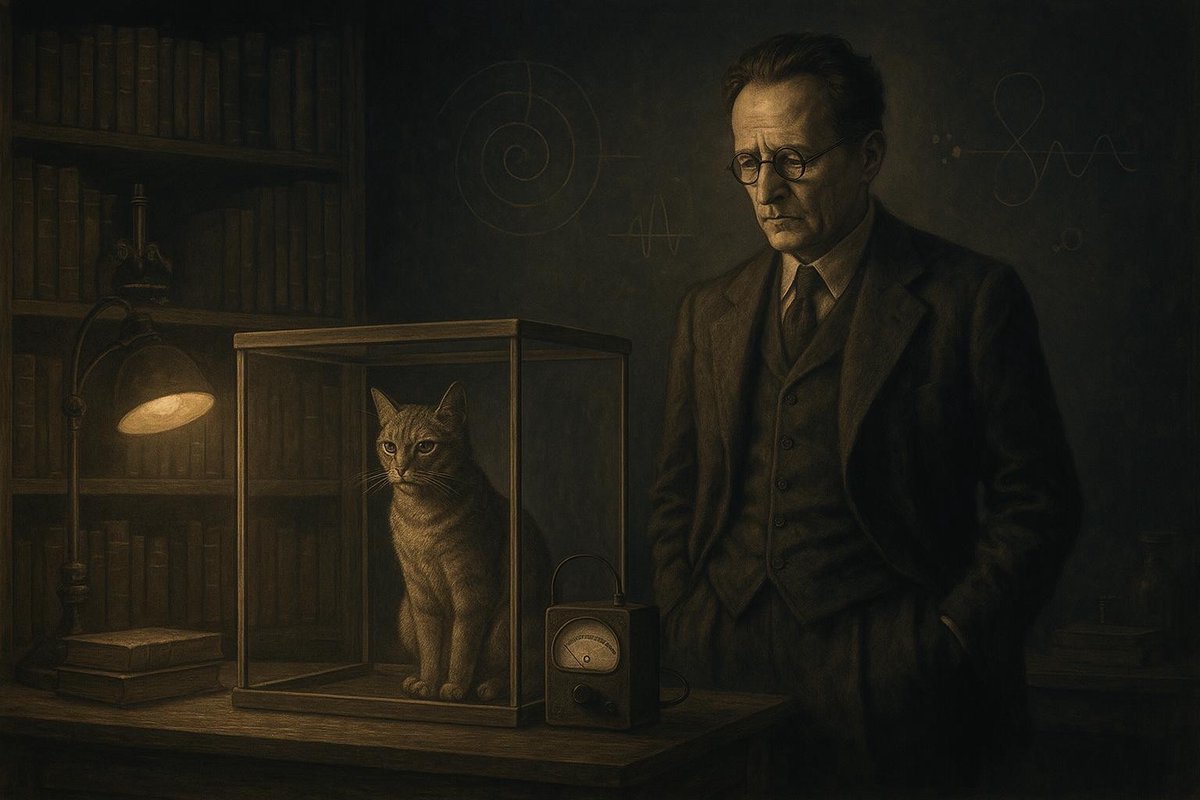
Hypothesis & Context
In the early 20th century, physicists grappled with the perplexing behavior of particles at the quantum level. Many people believe that the quantum world defies classical intuition — and they’re not wrong. Enter Erwin Schrödinger, a man renowned for his contributions to quantum mechanics but forever immortalized by a single thought experiment. Interestingly, Schrödinger’s Cat wasn’t intended to be a definitive explanation but a critique of the Copenhagen interpretation, highlighting its potential absurdities when applied to real-world scenarios.
- Quantum superposition suggests particles exist in all states simultaneously until observed.
- The Copenhagen interpretation was widely accepted but not universally embraced.
- Schrödinger introduced his cat to challenge the observer’s role in determining reality.
Of course, Schrödinger wasn’t the only skeptic. Albert Einstein, with his famous quip about God not playing dice, also questioned the randomness at the heart of quantum mechanics. As time goes on, scholars revisit these debates, pondering if our cognitive tools are fit to understand the quantum realm.
Setup & Method
Picture a sealed box containing a cat, a radioactive atom, a Geiger counter, and a vial of poison. The setup is simple yet profound: if the Geiger counter detects radiation, the vial shatters, and the cat perishes. Until the box is opened, the cat is both alive and dead — a superposition of states.
- A radioactive atom may decay or not decay within an hour.
- The Geiger counter detects potential decay, triggering a deadly mechanism.
- The cat’s fate remains unknown and indeterminate until observation.
This thought experiment is vivid and unsettling, capturing the essence of quantum indeterminacy. Schrödinger’s setup invites us to question: are realities defined by observation, or do they exist independent of it? No wonder it became a staple in discussions around quantum theory, challenging both laymen and seasoned physicists alike.
Results & Reactions
When Schrödinger first posited his feline paradox in 1935, the scientific community was abuzz. His contemporaries were stirred — some intrigued, others bemused, and a few outright dismissive. The paradox was not only a reflection of quantum mechanics but an indictment of its seemingly irrational implications.
- Niels Bohr defended the Copenhagen interpretation, emphasizing the role of measurement.
- Einstein and Schrödinger found the implications unsettling, sparking debates.
- The public was captivated by the seemingly ludicrous yet illuminating scenario.
Rhetorically, one might ask: does the thought experiment reveal quantum truths, or merely our struggles to comprehend them? The cat, alive and dead in its box, continues to haunt the imaginations of those who ponder the unseen realities of the universe. It’s a reminder that science often treads the line between the conceivable and the unfathomable.
Implications
Ultimately, Schrödinger’s Cat has transcended its original purpose, becoming a cultural icon and a philosophical touchstone. Its implications stretch beyond physics, prompting discussions in fields as varied as philosophy, cognitive science, and even literature.
- Highlights the limits of human cognition in grasping non-classical realities.
- Sparks philosophical debates about the nature of reality and observation.
- Encourages interdisciplinary dialogue on how we perceive and interpret the world.
In exploring Schrödinger’s Cat, we find not just a scientific curiosity but a mirror reflecting our cognitive boundaries. As we strive to comprehend the incomprehensible, we must ask ourselves: do thought experiments like these expand our understanding, or simply illustrate the confines of our perception? Perhaps the true value lies not in answers but in the endless questions they inspire.
In wrapping up, Schrödinger’s thought experiment continues to challenge both new and seasoned minds to question and probe. It highlights the dance between observation and reality, a dance that remains as mysterious as when it was first conceived.
Fuel Someone Else’s Curiosity
Have thoughts on Schrödinger’s Cat? Share this article and spark a discussion on the nature of reality and observation. Let’s explore these curious corners of science together.

Leave a Reply